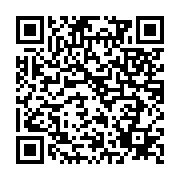Mastering Currency Trading A Comprehensive Guide to Forex Trading 1580571125

Mastering Currency Trading: A Comprehensive Guide to Forex Trading
Currency trading, commonly referred to as Forex trading, is a dynamic and exciting marketplace where currencies are bought and sold. As globalization continues to reshape the economy, the foreign exchange market has grown increasingly important as it provides numerous opportunities for traders. If you are looking to dive into this world, consider learning about the intricacies of trading, effective strategies, and essential tips for success. You can also consult resources such as currency trading forex Forex Brokers in Kuwait to explore the local trading landscape.
Understanding Forex Trading
The Forex market is the largest and most liquid financial market in the world, primarily because it operates 24 hours a day, five days a week. It involves trading national currencies against one another, with currency pairs such as EUR/USD, GBP/JPY, and USD/CHF being popular choices among traders.
In Forex trading, the first currency listed is called the base currency, while the second is the quote currency. For example, in the pair EUR/USD, EUR is the base currency, and USD is the quote currency. A trader predicts whether the value of the base currency will rise or fall against the quote currency, allowing them to profit from changes in prices.
Key Concepts in Forex Trading
To successfully navigate the Forex market, it’s essential to understand several key concepts, including:
- Pips: The smallest price move in a currency pair, usually measured in decimal places.
- Leverage: A tool that allows traders to control larger positions with a smaller amount of capital, amplifying both potential profits and losses.
- Margin: The amount of capital required to open and maintain a leveraged position.
- Bid and Ask Price: The bid price is the maximum price that a buyer is willing to pay for a currency, while the ask price is the minimum price that a seller will accept.
- Spread: The difference between the bid and ask price represents the broker’s profit and can vary depending on market conditions.

Types of Forex Trading Strategies
Developing a trading strategy is critical for success in Forex trading. Here are several popular types of trading strategies:
1. Scalping
Scalping involves making numerous trades throughout the day to profit from small price fluctuations. This strategy requires a deep understanding of market dynamics and quick decision-making skills.
2. Day Trading
Day traders open and close their positions within the same trading day, aiming to capitalize on intraday price movements. This strategy often relies on technical analysis and requires consistent monitoring of market trends.
3. Swing Trading
Swing traders hold positions for several days or weeks, looking to capture larger price movements. This strategy blends technical and fundamental analysis to identify potential entry and exit points.
4. Position Trading

Position traders take a long-term approach, holding trades for weeks or months based on fundamental factors. This strategy requires patience and a deep understanding of macroeconomic trends affecting currencies.
Risk Management in Forex Trading
Effective risk management is crucial for all Forex traders. Here are several risk management techniques to consider:
- Use Stop-Loss Orders: A stop-loss order automatically closes a position when it reaches a specified loss level, limiting potential losses.
- Position Sizing: Calculate the appropriate position size based on your account balance and risk tolerance to avoid overexposing your capital.
- Diversification: Spread your risk by diversifying your trades across different currency pairs and market conditions.
- Stay Informed: Keep up with economic news and events that may impact currency prices to make informed trading decisions.
Choosing a Forex Broker
Selecting the right Forex broker is critical to your trading success. Here are some factors to consider when choosing a broker:
- Regulation: Ensure that the broker is regulated by a reputable authority to protect your funds.
- Trading Platform: Evaluate the trading platform’s features, usability, and speed to ensure it meets your trading needs.
- Spreads and Commissions: Compare the spreads and commission structures of different brokers to find the most cost-effective option for your trading strategy.
- Customer Support: Look for brokers that provide excellent customer support to assist you with any issues that may arise.
Conclusion
Currency trading in the Forex market offers exciting opportunities for traders willing to invest time in learning and mastering the mechanics of the market. By understanding key concepts, employing effective strategies, and implementing sound risk management practices, you can enhance your chances of success. Remember to choose the right Forex broker and stay informed about economic developments that may influence currency prices. Happy trading!

